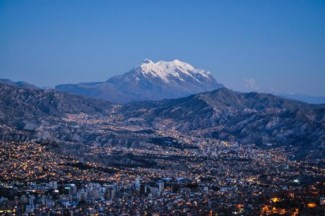Graduate of Temple University School of Medicine, Director of Wilderness Medicine Fellowship at University of California San Francisco Fresno Department of Emergency Medicine, Sue Spano, MD, FACEP, FAWM presented twice this year at the Wilderness Medicine Society’s annual (virtual) conference. Boasting the experience of about a thousand miles of the Pacific Coast Trail in Oregon and California and other recreational excursions, she shared a wealth of advice and personal recommendations for long distance backpacking.

To put it all into perspective, she referenced the Pacific Coast Trail (PCT), John Muir Trail (JMT) and the Appalachian Trail, each covering 2650 mi, 211 mi, and 2200 mi respectively. These are trips that last, easily, months. The general time frame for many of her recommendations is about five to six months.

Not surprisingly, the issue of weight comes up frequently for travelers. There are a number of studies done on this, from body mass index to base pack weight, and every ounce counts. While fitness level does not directly correlate to the incidence of injury, increase in BMI does correlate directly to increased risk of illness, injury, and trail evacuation. It is notable, however, that in a poll, about 2/3 of those hiking the PCT and well above those on the JMT trained before embarking on the trail, and most of them considered themselves to be “above average” in their level of fitness (7 or 8 on a scale of 1 to 10).

Although Dr. Spano does recommend carrying backups of three things — lighters, water treatment systems, and first aid — when it comes to base weight, there are several items that may be worth a little more investment for fewer ounces. Right off the bat: trail runners over boots. The mere difference in ounces becomes significant after so many miles, and the flexibility of softer shoes helps prevent a lot of discomfort (blisters, for example). She also notes that trail runners are more breathable and dry more quickly, sharing that she doesn’t typically bother to take them off to cross water or in snow as they will dry right on your feet along with your socks. It would be interesting to hear accounts of the footwear of preference on the Colorado Trail, where elevations are frequently higher and there may likely be more snow in general.
In another poll, 21.8 lbs was the base weight carried by packers, most of whom would have carried less in hindsight. This can be achieved by investing in lighter backpacks, tents, hiking poles, sleeping bags and sleeping pads, specifically. ULA Equipment out of Logan Utah makes an ultra-light pack that Dr. Spano prefers, “no conflict of interest”, just her personal favorite.
Skip the toothpaste, Spano urges. It doesn’t actually clean your teeth, so you might as well just brush with water.
Something else we’re seeing more and more of on distance excursions is tents that incorporate hiking poles as tent poles. Hiking poles themselves are recommended more and more as well, as they distribute more weight away from your legs.
Toilet paper must be packed out with you on much of the trail these days! Thus, the rise of the “backcountry bidet”, which you can make yourself by poking holes in the cap of a plastic liter water bottle. “You come out feeling like you had a full shower,” Spano testifies, and the water you use does not have to be filtered or potable.
Water! Know where your next water source will be. “Camel up at water sources … When you get to a water source, spend some real quality time there soaking your feet, cleaning your bandana, drinking as much water as you possibly feel like you want. Because the only time that your water is going to be ice cold is when you’re at that stream. Anything that you carry with is going to get really warm … Your easiest way to carry water is in your belly.”
When it comes to long distance backpacking, one of the finest pieces of advice Dr. Spano offers is that you should always be upgrading and optimizing your strategy:
“A person who hasn’t changed their backpacking practices in the last 10 years is not a person that I would really want to backpack with. A person who practices medicine the same way they did 10 years ago is not someone I want to practice medicine with. You should always be improving your gear, improving your behaviors, improving the way you approach the same challenge so that you’re a better backpacker as a result.”
Her hour-and-a-half practicum is available on the Wilderness Medicine Society website.

Roberto Santos is from the remote island of Saipan, in the Commonwealth of the Northern Mariana Islands. He has since lived in Japan and the Hawaiian Islands, and has made Colorado his current home, where he is a web developer, musician, avid outdoorsman and prolific reader. When he is not developing applications and graphics, you can find him performing with the Denver Philharmonic Orchestra, snowboarding Vail or Keystone, soaking in hot springs, or reading non-fiction at a brewery.































